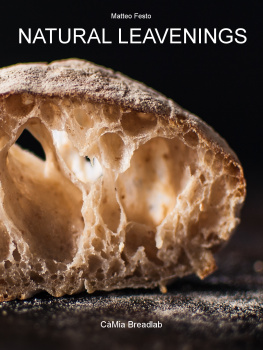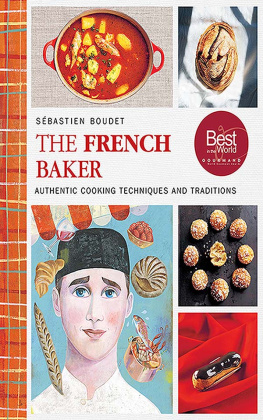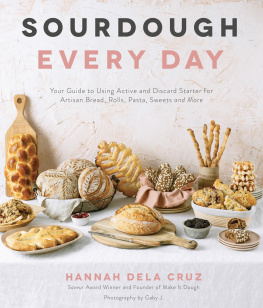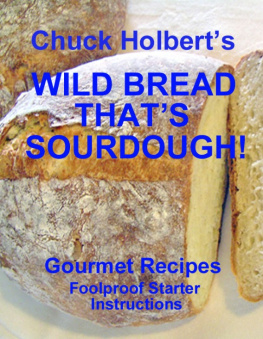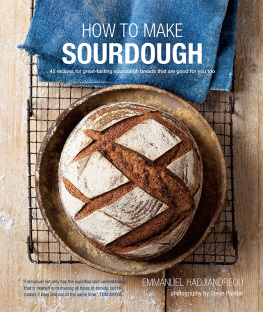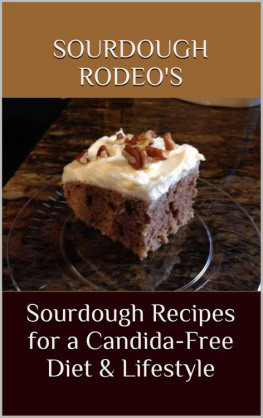Matteo Festorazzi - Natural Leavenings
Here you can read online Matteo Festorazzi - Natural Leavenings full text of the book (entire story) in english for free. Download pdf and epub, get meaning, cover and reviews about this ebook. year: 2017, publisher: Matteo Festo, genre: Home and family. Description of the work, (preface) as well as reviews are available. Best literature library LitArk.com created for fans of good reading and offers a wide selection of genres:
Romance novel
Science fiction
Adventure
Detective
Science
History
Home and family
Prose
Art
Politics
Computer
Non-fiction
Religion
Business
Children
Humor
Choose a favorite category and find really read worthwhile books. Enjoy immersion in the world of imagination, feel the emotions of the characters or learn something new for yourself, make an fascinating discovery.
- Book:Natural Leavenings
- Author:
- Publisher:Matteo Festo
- Genre:
- Year:2017
- Rating:3 / 5
- Favourites:Add to favourites
- Your mark:
- 60
- 1
- 2
- 3
- 4
- 5
Natural Leavenings: summary, description and annotation
We offer to read an annotation, description, summary or preface (depends on what the author of the book "Natural Leavenings" wrote himself). If you haven't found the necessary information about the book — write in the comments, we will try to find it.
Natural Leavenings — read online for free the complete book (whole text) full work
Below is the text of the book, divided by pages. System saving the place of the last page read, allows you to conveniently read the book "Natural Leavenings" online for free, without having to search again every time where you left off. Put a bookmark, and you can go to the page where you finished reading at any time.
Font size:
Interval:
Bookmark:


For
Daniela Sala, Elisa Festorazziand
Pierluigi Festorazzi who is lookingdown on us from above
It was only after workingfor years as a cook that I turned my attention toBreadmaking.
This passion for the White Art was lying dormant inside me whenI found myself, against my own will, working as a pizza chef for afew seasons (I was living abroad and work was hard to find).
Even then I was utterly fascinated by the fermentation of water,yeast and flour. However I could tell that I was going tospecialise in another field entirely: Bread.
I had the good fortune to get a solid foundation when I met andgot to spend time working with some bakers who had twenty years' ofexperience.
Later, through a relatively quick succession of developments, Icame to focus my energy on the study and use of naturalleavening.
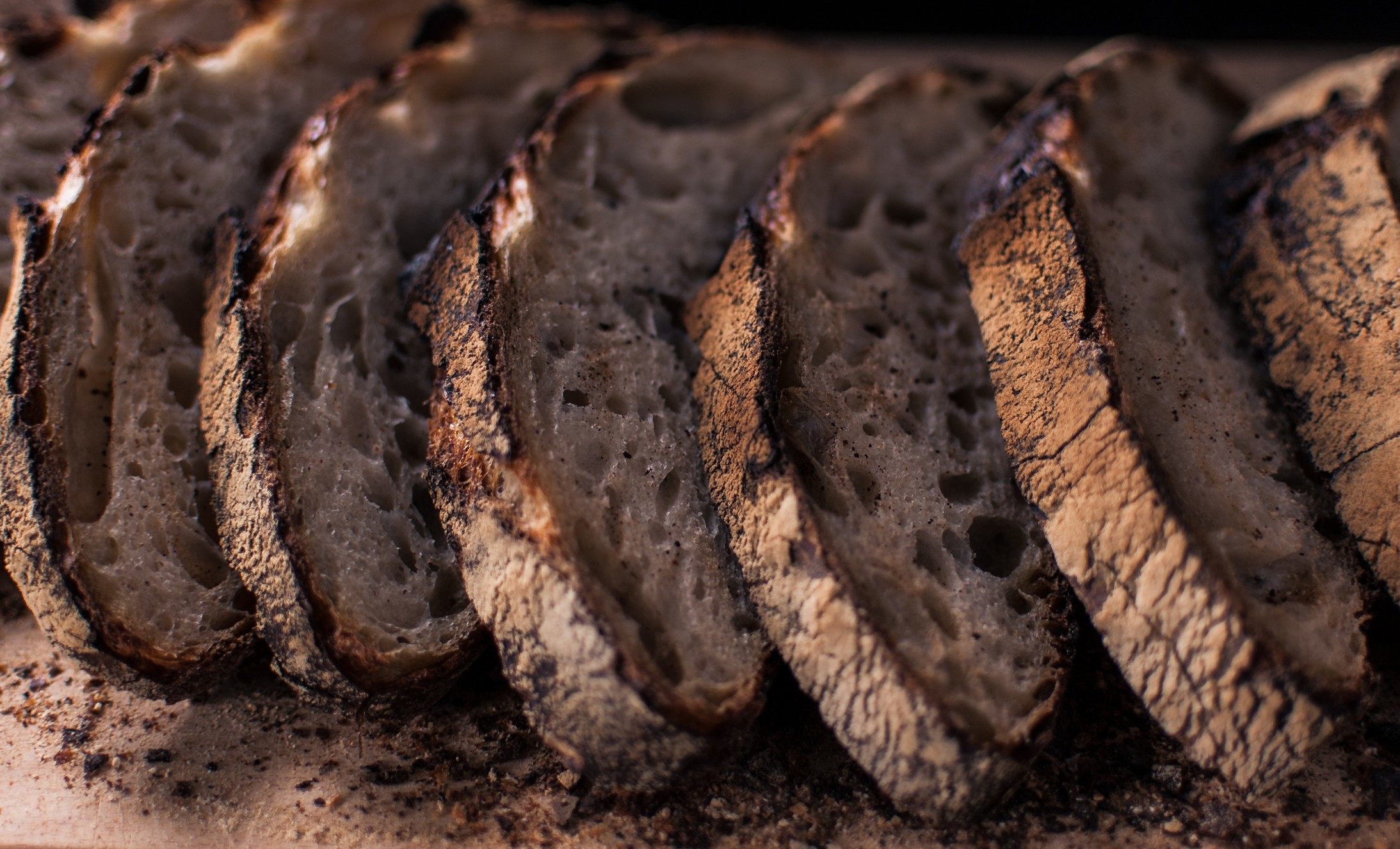
A book? That was whatinevitably crossed my mind on reading some of the comments on myInstagram profile dedicated to bread making: https://www.instag r am.com/ca_mia_breadlab/
So many times members of our the community on the socialnetworks had asked me where they could find recipes, tips onmethods and more detailed information on the breads I was showingevery day in my photos on the web...
...But a specialist book!
After studying all the best material available, tracked down onevery possible medium, and five years of apprenticeship, the momenthas come to share my work with somebody.
And that was where I got the idea to get out there and show thefruits of this passion to which I have devoted so much time on aday to day basis (losing out on sleep, time out from othercommitments, from sports training, from time with friends time outfrom my life).
The endless notes scribbled down on all kinds of scraps of paperor whatever was to hand at that particular moment, they have allcome in handy now.
And here I want to give you a word of advice as a friend: go andbuy yourself a diary where you can jot down every experiment andtrial. You'll find it is well worth it!
There are so many writings available on the subject, so I wantedto come up with something a little different from the usualoffering, something with a more practical bias and which alsoincluded some fo the secrets of the trade: little technicalobservations learnt through experience, which, in the right hands,can make all the difference in the world.
And presented in an easy to read format suited to any reader,not a boring, complicated academic text, and not just a soullessrecipe book.
I know that some of you are already turning up your nose atthis, but fear not, you will find here basic notions for the noviceof the White Art but also methods and detailed methods for the moreexpert.
The recipes have all been tested a number of times in order toproduce a standardised repeatable recipe, so there is no danger youwill end up wasting precious time and ingredients on a recipe whichseems to work on paper but fails to deliver in practice.
But all the same, always remember that bread making is not anexact science and there are really so many different variables!
Starting with the type of water used, never mind thecharacteristics of the yeasts and flours and even the type ofsalt.
So I advise those of you with more experience to always work onthe basis of this experience and adjust everything accordingly ifneeded.
And for those of you who are new to bread making, I advise youto learn as much as possible from any mistakes you might make. Thisis where your diary will come in handy, so that each time you bakeyou can jot down your impressions and build up the experience soessential to getting consistent results.
And before leaving you to go on with your reading, here isanother word of advice (aimed particularly at those who have a fairamount of previous experience).
This is advice which I always give during bread making courses,and I feel it is extremely important:
The best way to improve is to always be prepared to reinventyourself! Have the courage to jettison all that you thought youknew, all your previous experience, start out from scratch, withoutfear of making mistakes, and then return to your way of doingthings with new experience and a new awareness and to come fullcircle, new and surprising results!
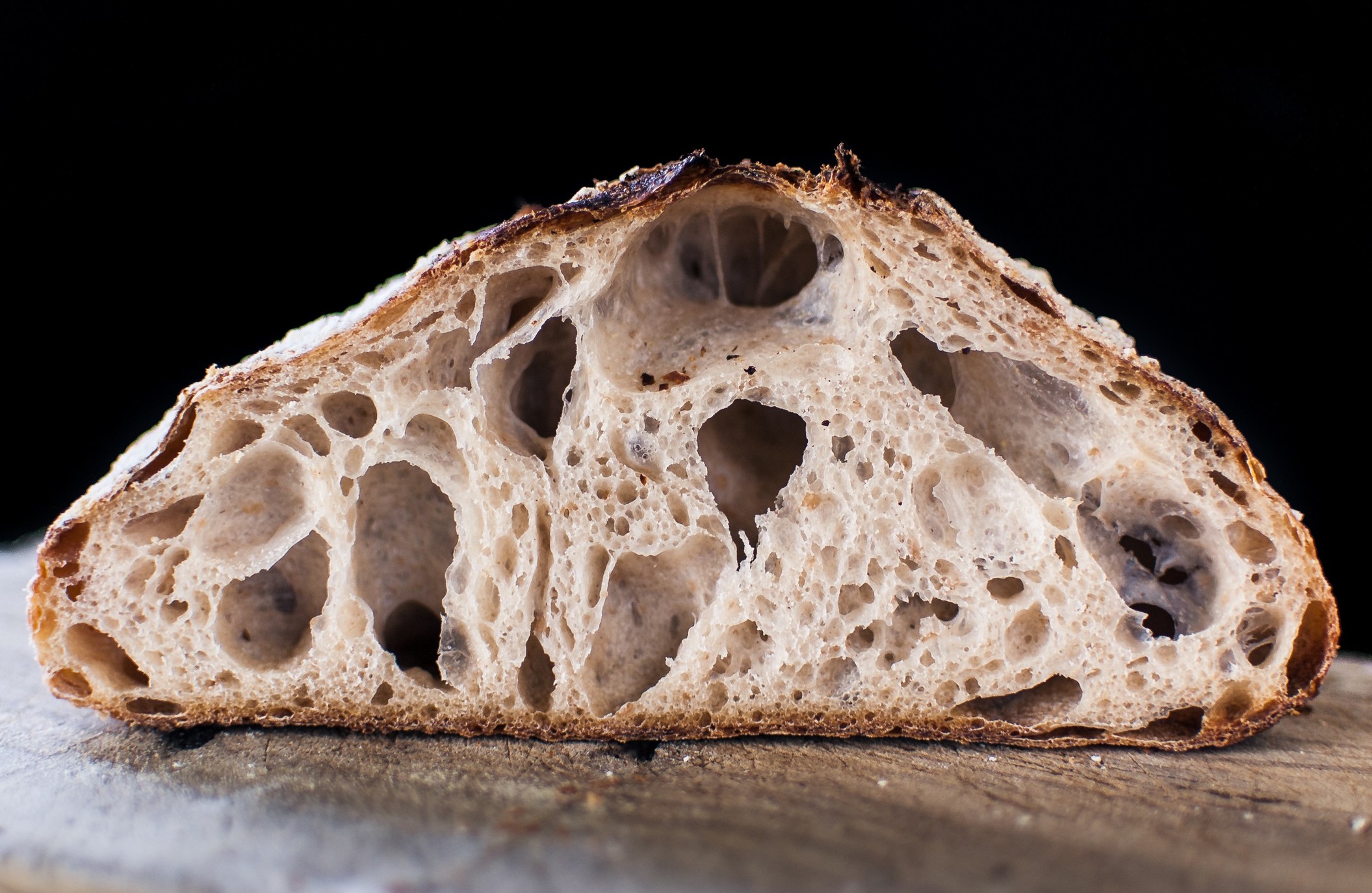
As far back as I canremember, I have been fascinated by cookery. As in the majority ofold-style Italian families, I grew up with the tradition of SundayLunch, and from the earliest age started messing about withdifferent types of flour, sheets of fresh pasta, sweet and savourypies as well as all kinds of traditional dishes.
The rule was that on Sunday morning we all congregated atmy grandparents' house where the work would have been under waysince first light.
I can still remember the puffs of steam rising from thepots where the vegetables were simmering for the preparation ofstarters, the aroma of the sauted ingredients for stuffing, or thesmell of fish being fried for marinades.
I've lost count of the times I helped close theinterminable rows of ravioli stuffed with magro (ricotta andspinach), or laid out the freshly made strips of tagliatelle eggpasta to dry!
Which is part of the reason why, aside from loving goodfood, I have always been extremely curious about food preparationand cooking methods. And this interest led me to work as a cook fora number of years, until finally
I realised that my true passion was for something else:
Bread making.
But let's take things one at a time. I have to retrace mysteps to find the exact moment when my obsession with the White Artof bread making took root.
Some years back, I was living abroad, working most of thetime in Italian restaurants, and it was there that I found myselfforced to learn the trade of the pizza chef.
Since I had to be able to take the place of my colleaguewho was in charge of the pizzeria, for the first time I had tostart kneading dough.
Ever since then I have been truly fascinated by what issuch a simple yet complex process, this blending of water, flour,yeast and salt.
I had other occasions to work as a pizza chef, but I felt Iwas far too occupied with cooking, working on the ingredients forthe toppings, and forced by considerations of time to make certainchoices as regards the fermentation process.
Only two years had passed, and meanwhile I had been luckyenough to get to know bakers and lovers of the White Art who helpedlay the foundations of my current bread making philosophy.
And as chance would have it, once I returned to Italy, Iopened a trattoria, in what had once been my grand parents' house.There, in the '70s, people used to sit around the fireplace,drinking and singing, and the fire was always burning.
Font size:
Interval:
Bookmark:
Similar books «Natural Leavenings»
Look at similar books to Natural Leavenings. We have selected literature similar in name and meaning in the hope of providing readers with more options to find new, interesting, not yet read works.
Discussion, reviews of the book Natural Leavenings and just readers' own opinions. Leave your comments, write what you think about the work, its meaning or the main characters. Specify what exactly you liked and what you didn't like, and why you think so.

